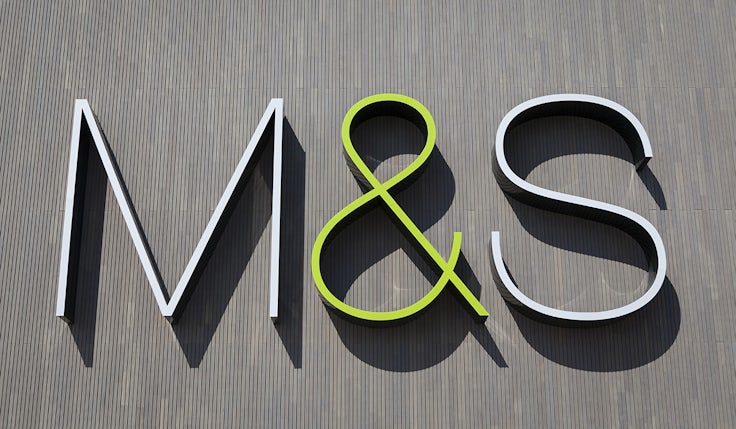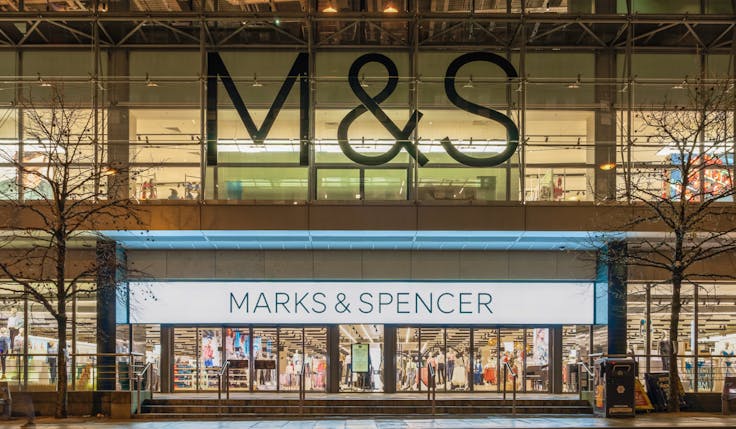‘We’ve fixed the basics, let’s shape the business’: M&S on the next stage of its transformation
M&S has highlighted its brand and product proposition, personalisation and data, and modernising its store estate and supply chain as key focus areas for the next two years.
 M&S has promised to maintain the “pace of change” this year despite ongoing pressures from inflation, the cost of living crisis, and the Ukraine war, after reporting a successful first half of its five-year transformation plan.
M&S has promised to maintain the “pace of change” this year despite ongoing pressures from inflation, the cost of living crisis, and the Ukraine war, after reporting a successful first half of its five-year transformation plan.
The business reported profit before tax of £522.9m for its last financial year, compared to £403.1m in the year to March 2020 – the last pre-Covid comparison period. Statutory profit after tax was £309m compared to £27.4m.
On a results call today (25 May), chairman Archie Norman said M&S’s balance sheet is now “remarkably strong” after looking “a bit wobbly” three years ago prior to the implementation of the transformation plan.
“That gives us confidence and fire power for the future, the changes and the investment ahead,” he said.
While admitting the current UK inflation level – which, at 9%, is at a 40-year high – is taking its toll on the business, Norman said: “The most important thing for us is to keep the pace of change, because there’s so much scope for improvement.”
Norman added that M&S is “well placed” to weather the cost of living crisis, having improved its value perception in the last three years.
The second half of the transformation is being hailed by M&S as its “shaping the future” stage, with the tagline, “We’ve fixed the basics, now let’s shape the business”.M&S credits transformation plan for festive boost as loyalty membership doubles
According to new co-CEO Stuart Machin, who takes over leadership of the business alongside Katie Bickerstaffe today as Steve Rowe steps down, the “most important priority” for the company now is to “build on the strength of the M&S brand” and its product proposition.
“We will offer style in clothing, home and beauty, and great taste in food, and always underpin that with our commitment to trusted value across all of our categories. This means quality and innovation,” Machin said.
Machin said M&S will also focus on tackling areas of the business that need to be “modernised”, including the store estate and supply chains. Some of the estate remains “out of date” and “poorly located” compared to competitors, the company said.
According to Bickerstaffe, other areas of focus will include investment to “improve and innovate” the customer experience across the M&S website and app, to grow digital active users.
“Integrating and enhancing the links between our store and digital channels is essential,” she said. “We know that customers with multiple digital touch points are the most loyal and spend the most with us. It will give them more reasons to shop at M&S.”
The retailer will also continue to invest in its data and personalisation proposition, which includes growing its Sparks loyalty customer base. The loyalty programme now claims 15 million members.
The trading environment is tough, but we are in the next stage of our transformation. Shaping the M&S of the future and our path to sustainable growth.
Steve Rowe, M&S
Meanwhile, M&S is developing a bespoke in-house solution to deepen relationships with customers and drive further growth through personalisation. Already around 8% of M&S.com sales are being driven by personalisation, the company said. The goal is to scale this, and move from a targeted promotions model to one where the range, interactions and product presentations are relevant to the individual customer.
Outgoing CEO Rowe summarised the aim for the year ahead as “[making] sure we take the opportunity to continue to improve the opportunities and efficiencies in our business”.
He added: “The team are well placed to do that, and to mitigate as much as possible what [costs] we’ll pass on [to consumers as a result of inflation].
“The trading environment is tough, but we are in the next stage of our transformation. Shaping the M&S of the future and our path to sustainable growth.”
So far, overall trading in the first six weeks of the new financial year has been ahead of the comparable periods in 2021/22, including the period from 12 April 2021 when non-essential retail reopened, the business said.
Progress to date
Outlining the progress made by M&S over the first half of its transformation, Rowe highlighted the turnaround in its brand perception. Three years ago, brand perception was “weakening” and customers thought M&S was “no longer relevant”. Now, almost all customer metrics indicate renewed interest, with consumer approval on the up, he said.
The business had “lost credibility” with its point-based loyalty system, but now claims 15 million members to its digital-first Sparks scheme, as well as 4 million app users.
M&S has also transformed from one of the lowest performing food businesses in the UK, to the top performing on a like-for-like sales basis, Rowe claimed. The food business saw sales growth of 10.1% over the last 12 months, and market share has grown from 3.4% to 3.6% over the last three years.
Value and quality perception indicators are now “robust”, with value perception up five points since March 2019 and quality perception at its highest level in over five years. Rowe claimed M&S’s prices are now less expensive than its rival Waitrose, as the retailer has relaunched its “Remarksable Value” and “Fresh Market Specials” ranges, which focus on quality at everyday low prices. According to M&S, one in four baskets includes one of these lines.M&S to tackle ‘growth barriers’ in home by extending ‘Remarksable’ campaign beyond food
The business is now increasingly focused on reaching customers with its food in new places. In February, M&S partnered with Costa Coffee, making available around 30 M&S food-on-the-move products in around 2,500 coffee shops. Early sales are in line with expectations, the company has said.
On the clothing and home side of the business, which had been particularly struggling prior to the transformation strategy, sales were up 3.8% over the last 12 months. Online sales were up 55.6% to reach 34% of UK clothing and home sales, offsetting a 11.2% reduction in store sales. The growth in the business follows a 20% reduction in the business’s product range and a new focus on popular lines such as denim.
M&S also moved away from a “reliance” on discounting across both the food and clothing and home businesses. Previously, approximately 30% of food sales and 35% of clothing and home sales were at discount prices, which the company acknowledges was “eroding customer trust”.
By shifting to a more value driven proposition and clearer pricing architecture, with new entry price points in products such as women’s jeggings and men’s denim, the business has been able to halve promotions to less than 15% of food sales and 18% of clothing and home sales.‘Vicious cycle’: Why brands are choosing to ditch the discounts
Exiting Russia
M&S also said today it would be joining brands including McDonald’s, Renault and Starbucks in fully exiting the Russian market in response to the continuing Ukraine war.
The M&S businesses in Russia and Ukraine are operated by a licence holder and franchise partner, and in 2021/22 generated retail sales of £102.5m and a contribution towards profit before adjusting items of £5.2m.
However, M&S ceased shipments to Russia on 3 March 2022. The retailer has now made the decision to fully exit its Russian franchise, taking on a cost of £31m as a result of exit costs and continued business disruption in Ukraine.
“Our colleagues and customers expect us to do the right thing, and we will do so here,” Rowe said.
Meanwhile M&S’s Ukrainian business remains partially closed, but the business said it is working with its partner to reopen “as and when possible”.






